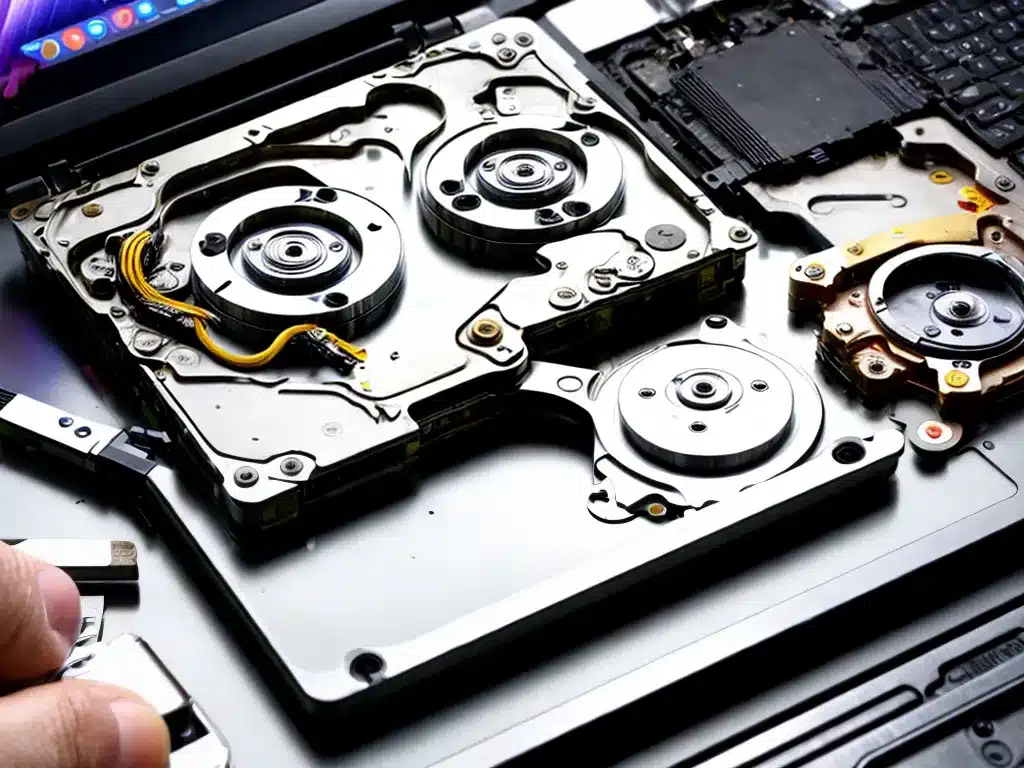
Introduction
Losing access to your data on a non-booting MacBook can be stressful. As someone who relies on my laptop daily, I understand the anxiety of being locked out of important files and documents. The good news is, data recovery is often possible in these situations if you know where to look and have the right tools. In this guide, I’ll walk through the steps I took to successfully recover data from my non-booting MacBook.
Diagnosing the Issue
Before attempting data recovery, it’s important to diagnose why your MacBook is non-booting. Common causes include:
-
Corrupted operating system files – Errors in crucial system files like the Mac OS can prevent booting.
-
Failed hard drive – If the hard drive has mechanical errors or corrupted sectors, it may not mount correctly.
-
Faulty RAM – Damaged or dislodged RAM can lead to startup issues.
-
Liquid damage – Spills can short out logic boards and other components.
-
Logic board failure – Component problems on the logic board can prevent full system functionality.
I discovered the hard drive on my MacBook had developed bad sectors leading to the non-booting state. Knowing this focused my recovery efforts on accessing the drive data externally.
Preparing a External Enclosure
To extract data from the MacBook’s hard drive, I needed to remove it and connect it to another computer using an external enclosure. Enclosures are inexpensive and convert internal hard drives into external USB drives.
I disassembled my MacBook and removed the hard drive, being careful not to damage any connectors. I then installed the drive securely in a USB 3.0 hard drive enclosure, which I attached via USB to my Windows desktop.
Mounting the Drive on Another Computer
With the drive connected via the enclosure, I booted into my Windows desktop to see if the external drive would mount correctly. Since my MacBook drive was formatted as HFS+, it did not automatically mount on my Windows machine.
To access the HFS+ drive, I installed HFSExplorer, a free program that enables Windows computers to read Mac-formatted drives. Once installed, I ran HFSExplorer and selected my external drive. Success – HFSExplorer could successfully mount and read my MacBook’s hard drive!
Recovering Files and Folders
With the drive mounted, I could now browse and recover data from it through the HFSExplorer interface. I navigated to key folders like Documents and Desktop to recover important files. Media like photos and videos from Pictures were also thankfully intact.
HFSExplorer made it easy to copy files from the Mac external drive to my Windows machine for backup. I recovered over 80GB of personal and work documents – a huge relief!
Summary
-
Diagnosing the root cause for a non-booting MacBook is the first step before recovery.
-
An external enclosure allows removing the MacBook’s hard drive and connecting it to another computer.
-
Programs like HFSExplorer enable reading Mac-formatted drives from Windows.
-
With the external drive mounted, files and folders can be browsed and copied off to safety.
While a non-booting computer can be panic-inducing, this experience proved to me that data recovery is often possible with some external hardware and the right software tools. I was fortunate to recover my important files, thanks to following a methodical external drive data recovery process.












